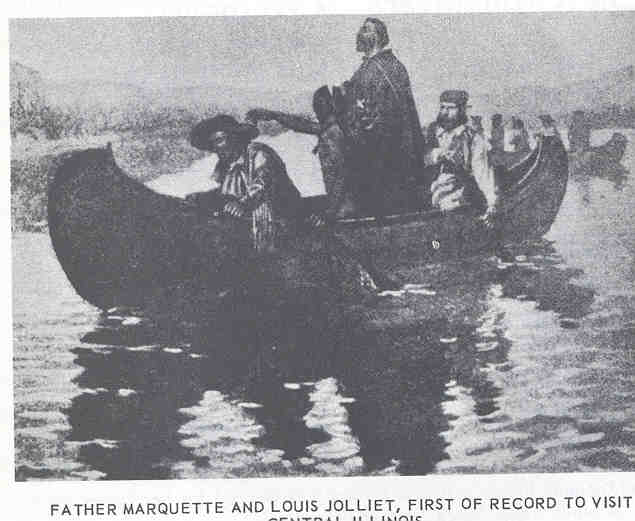We have seen nothing like this river for the fertility of the land,
its prairies, woods, wild cattle, bustards, swans, ducks, parrots and even
beavers. There are many small lakes and rivers. That on which we sailed
is wide, deep, and still, for 65 leagues. We found on it a village of Illinois
called Kaskaskia, consisting of 74 Cabins. They received us very well,
and obliged me to promise that I would return to instruct them . . . .
. we passed through the Illinois of Peouarea, and during three days I preached
the faith in all their cabins; after which, while we were embarking, a
dying child was brought to me at The water's edge, and I baptized it shortly
before it died . . . .

Father Marquette and Louis Jolliet, first of record to visit Central Illinois.
Thus was the first religious act performed within the boundaries of
Illinois.
Without venturing too far from river highways, French traders and priests
were over most of the state before 1699, when Cahokia was founded, and
perhaps a year before Henri de Tonti abandoned the La Salle trading post
that he had helped establish atop Starved Rock as the French Fort St. Louis.
By 1730 French military expeditions were marching overland. Lt. Louis
Coulon de Villiers the elder marched his 800 French and Indian soldiers
that summer from Fort St. Joseph, now Niles, Michigan, to le rocher,
from where he followed the fleeing Fox Indians,2 probably
along the Vermilion River and Rook's Creek to the Arrowsmith battlefield.
On this route he would have passed near today's Weston and Colfax.
Page 2
Go to previous page
Go to next page
Go to El Paso Story gateway page

